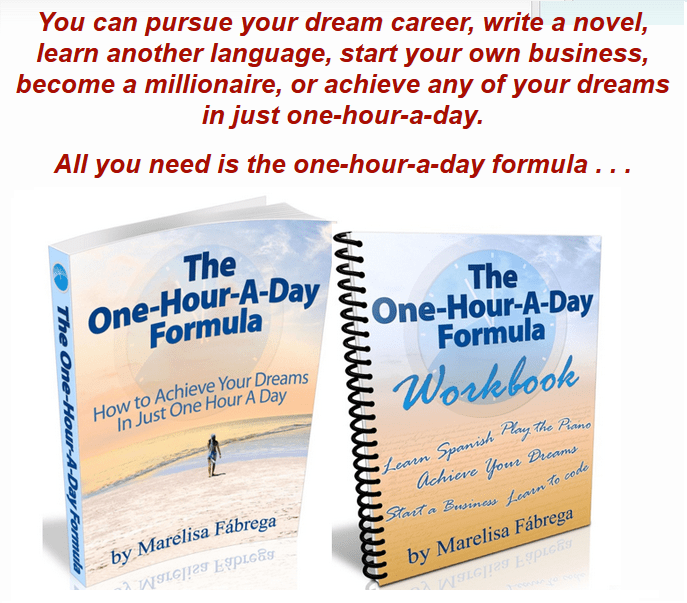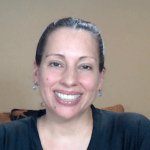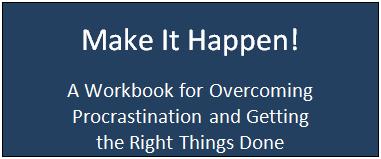
Solve any problem you may be having by conducting life experiments.
Why would you want to conduct life experiments? To solve problems. Whenever I have a problem, I solve it by conducting an experiment. I follow a ten-step process which I developed, and which I’m going to share with you in this blog post.
 Keep in mind that you can conduct life experiments in any life area. Here are some examples:
Keep in mind that you can conduct life experiments in any life area. Here are some examples:
- If you want to lose weight you can conduct experiments to determine which exercise is most efficient in burning calories (or which exercise you’ll stick to).
- If you have a health problem—such as high cholesterol—you can conduct life experiments to help you determine the diet which is most helpful in helping you to control your symptoms.
- If you want to create a passive source of income you can conduct life experiments to help you determine which method—of the many that are available—works best for you.
- If putting your kid to bed every night is an ordeal, you can conduct life experiments to uncover a bedtime routine that will help your child easily transition from wakefulness to sleep
Below I’m going to reveal my process to you, and I’m going to use a life experiment that I’m currently conducting as an example.
1. State Your Problem.
The first step of the process is to state the problem that you want to solve by conducting a life experiment.
On January 28th of this year, I went to the dentist for a routine teeth cleaning. This revealed the following:
- I have a cavity between two teeth that the dentist wants to fill.
- My teeth need to be re-mineralized.
- I’m a coffee drinker, so my teeth are a little bit stained.
- My gums are somewhat inflamed in some places, and receding in others (studies show that more than 75% of American adults have some form of gum disease).
The dentist gave me a list of about 10 different procedures she thought I needed, most of which sounded rather invasive. In addition, these procedures would cost me a total of $1500. Needless to say, I was not happy.
First, I don’t want the dentist drilling my teeth to fill the cavity that she found. Second, I don’t like the idea of getting fluoride treatments to re-mineralize my teeth. And, third, I honestly felt like she was trying to talk me into procedures that I don’t really need.
Therefore, I decided that I would try to fix this problem by conducting a life experiment. Here’s how I stated my problem:
I want to reverse the cavity that I have between two of my teeth naturally; I want to re-mineralize my teeth naturally; and I want to whiten my teeth.
Here are my teeth at the start of the experiment:

2. Conduct Research.
The second step of the process is to conduct research in order to determine what your course of action will be. Make sure that you only rely on high quality resources.
My research uncovered a book called Cure Tooth Decay: Heal and Prevent Cavities with Nutrition by Ramiel Nagiel. The book is based upon the pioneering nutritional program of dentist Weston Price, former head of research at the National Dental Association. I purchased the Kindle version of the book and read it.
I also found a blog called “Wellness Mama”—a top source for healthy recipes and natural remedies—in which the owner, Katie, writes about ways to live more naturally.
Katie has several blog posts in which she shares everything she does to keep her teeth and gums healthy. She reports that she has successfully reversed cavities and improved her oral health. Here are two of her blog posts that I found particularly helpful:
I also read a few more articles by people who indicated that they had been able to reverse cavities and improve their gum health naturally. In addition, I read Amazon reviews for several products that are credited with being beneficial for teeth and gum health.
3. Construct a Hypothesis.
The third step of the process is to construct a hypothesis. A hypothesis is a supposition made on the basis of limited evidence which is used as a starting point for further investigation.
My hypothesis—for this experiment–is that I can heal my cavity, improve my gum health, and have whiter teeth naturally, without the need of going to the dentist to get expensive, invasive, and possibly unhealthy procedures done.
4. Design an Experiment to Test Your Hypothesis.
Once you’ve done your research and you’ve constructed a hypothesis, you need to design an experiment to test your hypothesis. In designing your experiment you should be able to answer all of the following questions:
- What You’re Going to Do
- When You’re Going to Do It
- How You’re Going To Do It
- How Will You Know if You Succeeded
- Establish a Start Date for Your Experiment
- Establish a Deadline or End Date for Your Experiment
What I’m Doing
Here’s what I’m going to do for my experiment (as well as when and how):
- Oil pull with one spoonful of organic virgin coconut oil every night before bed, for 20 minutes. Oil pulling is an ancient Ayurvedic dental technique that involves swishing oil in your mouth.
- Brush my teeth three times a day with my homemade toothpaste, using the Bass Brushing Technique. My homemade toothpaste consists of 3 Tablespoons of Dolomite Powder; 4 Tablespoons of Bentonite Clay; and 1.5 Teaspoons of ground cloves. I’m going to add 3 drops of OraWellness HealThy Mouth Blend to the mix before each use. I’m going to brush as soon as I wake up in the morning, after lunch, and at night immediately after oil pulling.
- I’m going to take one softgel of Vitamin D-3 5000 IU right before breakfast.
- I’m going to take two capsules of Blue Ice Royal Butter Oil / Fermented Cod Liver Oil Blend right before breakfast, and 2 right before dinner.
- I’m going to floss every night right before oil pulling. In addition, I’m going to add one drop of the Healthy Mouth Blend to my dental floss.
- I’m going to drink water immediately after drinking coffee.
- I’m going to continue scraping my tongue every morning after brushing my teeth.
How Will I know If the Experiment is Successful
I’ll know if the experiment is successful if I get a clean bill of health after my next dental appointment.
Start and End Dates
Here are the start and end dates of my experiment:
- Start Date: February 14th 2016
- End Date: August 15th 2016
5. Gather What You’ll Need
The fifth step of the process is to gather everything that you’ll need (or at least the things that you’ll need in order to get started).
Once I decided what I was going to do, I made a list of all the things I was going to need. With my list in hand, I went to a health food store near my house and bought all of the items on the list which I was able to find there. Then I went on Amazon and ordered the items that weren’t available at the health food store.
I received my packages from Amazon, and then I had everything that I needed.
6. Take Action
The sixth step of the process is to take action. By this point you should already have decided what you’re going to do, as well as how and when you’re going to do it. You should also have everything that you need to get started. Now, act.
Starting on February 14th I’m going to do everything that I planned to do in Step 4 of the experiment process. I will take the action that I planned, how I planned it, and when I planned it. I will take daily action until I reach the end date of my experiment.
7. Monitor, Measure, and Track Your Progress
As anyone who has ever conducted an experiment of any kind knows, you have to monitor, measure, and track your progress. Careful observation is very important during this step of the process.
Every day I will write down on an index card the action related to this experiment that I took on that day. In addition, I will make a note of how my gum and teeth feel, and how they look, as well as anything else that I consider relevant to the experiment.
8. Make Changes as Necessary
The eight step of the process is to make any necessary change as you go along. As your experiment progresses, you may decide to make some modifications. It’s alright to do this, as long as you keep a record of any changes that you’re making.
As I monitor my progress, I may decide that I need to make some changes to the experiment. For example, if I notice that my mouth doesn’t feel as fresh as usual—since my homemade toothpaste consists of a mixture of powders– I might add some peppermint essential oil to my toothpaste.
In addition, if it appears-after a month or so–that my teeth are not re-mineralizing, I’ll consider adding some of the other recommendations for teeth re-mineralization that I found during my research. Here are three that look promising:
- Start making bone broth and drinking two cups of it a day.
- Start taking liver capsules.
- Start taking powdered gelatin.
Also, if my teeth aren’t looking whiter in about a month’s time, I’ll consider brushing them with activated charcoal twice a week (on Mondays and Thursdays). Lastly, when it’s time to change my toothbrush I’ll consider getting a Bass toothbrush.
Of course, if I feel any pain in my teeth, my gums start to bleed, or there’s any other indication that there’s something wrong, I’ll immediately schedule an appointment with my dentist.
9. Analyze Your Data and Reach a Conclusion.
Once you reach the end date of your experiment you need to analyze your data and reach a conclusion.
I plan to schedule a dentist appointment for August 15th (or close to that date). Based on what my dentist says, I’ll analyze all of the data I gathered throughout my experiment and reach a conclusion on whether the experiment worked or not.
10. Decide What’s Next.
The last step of the process is to decide what to do next.
Whether my experiment works or not, I need to decide what to do once its over. Here are three options:
- Declare the experiment a failure and ask the dentist to proceed with all of the procedures she recommends.
- Declare my experiment a success and continue taking the same action.
- Declare my experiment a success but make modifications to it.
Conclusion
Once again, you can use the 10-part process above to fix any problem you may be having, in any life area. Go ahead and try it out. Live your best life by conducting life experiments.





Related Posts:
- How to Prepare Yourself For Success
- 10 Ways to Have More Fun and Play More As An Adult
- 20 Ways to Make Time to Achieve Your Goals
- 10 Habits That Will Make You A Stronger, Happier, Better Person
Did you enjoy this article? Subscribe to “Daring to Live Fully” by RSS or by email, and get free updates.




 Marelisa Fabrega is a lawyer and entrepreneur. She holds a Bachelor of Science in Business Administration from Georgetown University in Washington, D.C., as well as a Juris Doctor from the Georgetown University Law Center. You can learn more about her
Marelisa Fabrega is a lawyer and entrepreneur. She holds a Bachelor of Science in Business Administration from Georgetown University in Washington, D.C., as well as a Juris Doctor from the Georgetown University Law Center. You can learn more about her 





